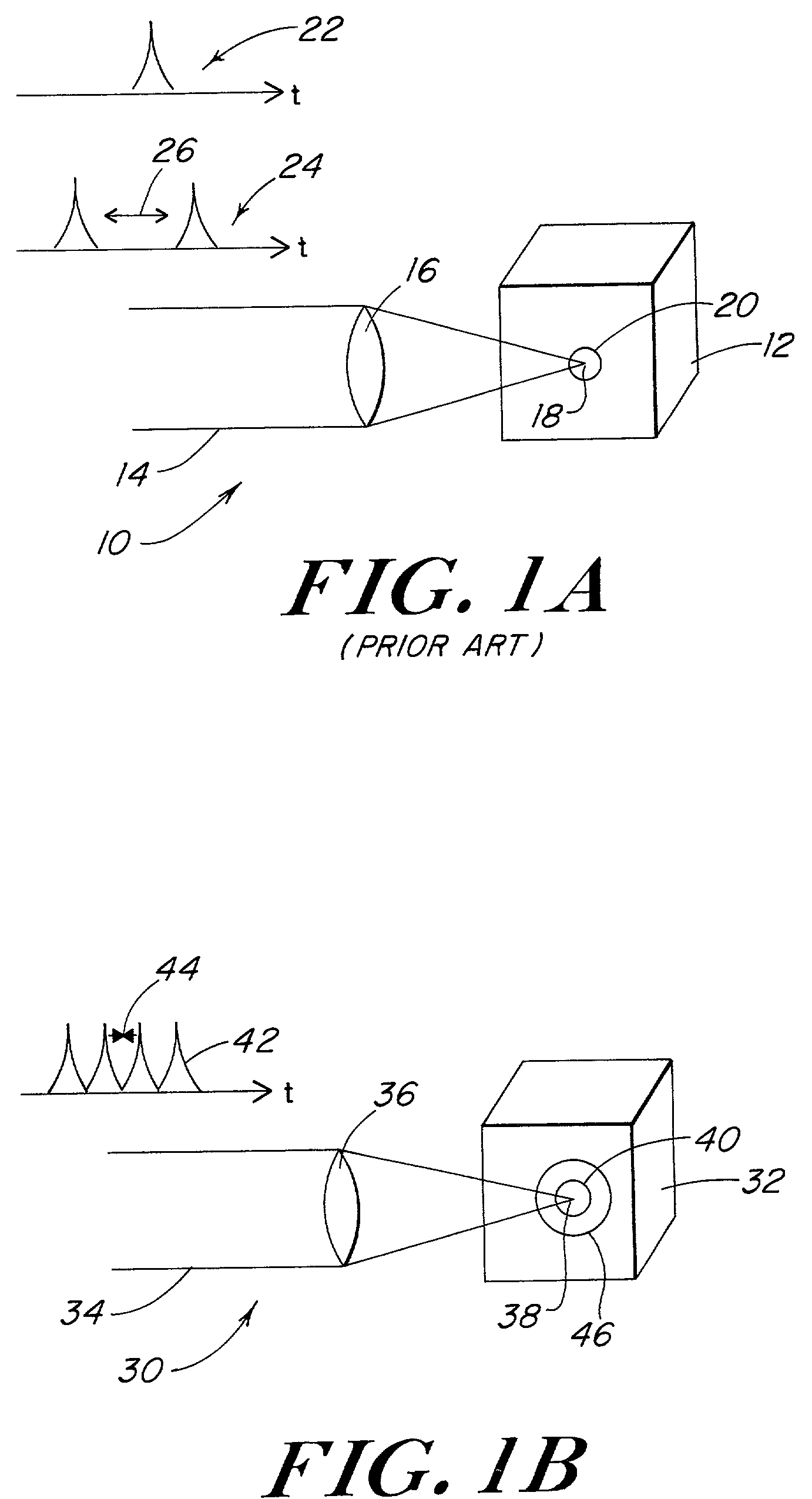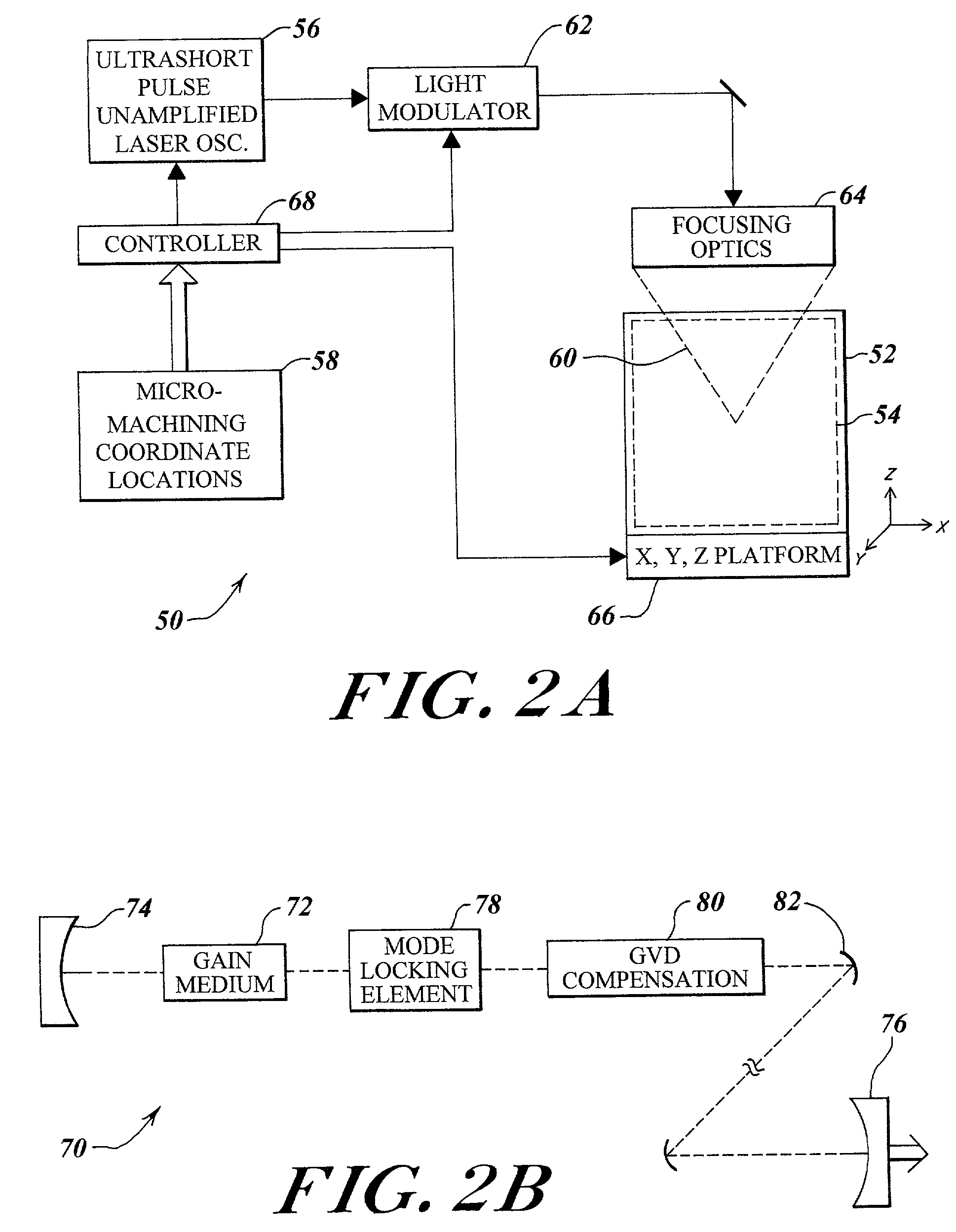Method and apparatus for micromachining bulk transparent materials using localized heating by nonlinearly absorbed laser radiation, and devices fabricated thereby
- Summary
- Abstract
- Description
- Claims
- Application Information
AI Technical Summary
Benefits of technology
Problems solved by technology
Method used
Image
Examples
Embodiment Construction
[0027]Referring now to FIG. 1A, generally designated at 10 is a pictorial diagram illustrating the heretofore known laser bulk micromachining techniques. A substrate 12 having a bulk to be micromachined is illuminated by a laser beam schematically illustrated by lines 14 which is focused by optics 16 to a preselected point 18 within the bulk of the substrate 12. The laser wavelength is chosen so that the material is transparent to the laser beam. The intensity of the laser 14 focused to the point 18 within the bulk of the substrate is selected to be high enough that laser energy is non-linearly absorbed within and structurally alters the region of the bulk within the focal volume schematically illustrated 20. In one single-pulse operating regime heretofore known generally designated 22, the energy of the single pulse is selected high enough to produce a microexplosion within the focal volume that creates a voxel within the focal volume 20 at each point 18 as described in U.S. Pat. N...
PUM
| Property | Measurement | Unit |
|---|---|---|
| Energy | aaaaa | aaaaa |
| Density | aaaaa | aaaaa |
| Volume | aaaaa | aaaaa |
Abstract
Description
Claims
Application Information
 Login to View More
Login to View More - R&D
- Intellectual Property
- Life Sciences
- Materials
- Tech Scout
- Unparalleled Data Quality
- Higher Quality Content
- 60% Fewer Hallucinations
Browse by: Latest US Patents, China's latest patents, Technical Efficacy Thesaurus, Application Domain, Technology Topic, Popular Technical Reports.
© 2025 PatSnap. All rights reserved.Legal|Privacy policy|Modern Slavery Act Transparency Statement|Sitemap|About US| Contact US: help@patsnap.com



